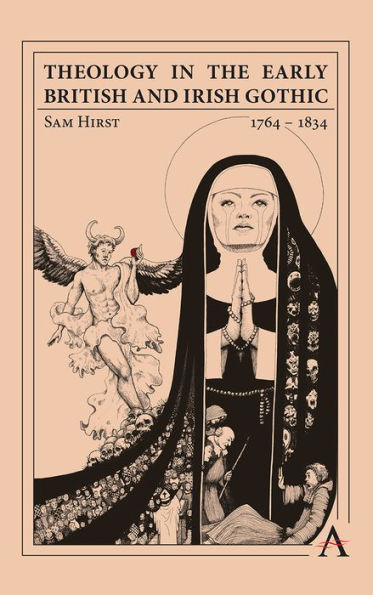Theology in the Early British and Irish Gothic, 1764–1832 seeks to explore the extent to which Early British Gothic writing, c.1760–1830, took distinctive shape in the particular theological and theo-political climate of the late eighteenth and early nineteenth centuries. The project takes as its starting point the widely noted ‘anti-Catholicism’ of the Early British Gothic. While taking into account the existing work in this field, the thesis will move beyond a simplistic Protestant/Catholic binary found in works, such as Diane Long Hoeveler’s The Gothic Ideology (2014) and Maria Purves Gothic and Catholicism (2009), which investigate the Gothic as anti- or pro-Catholic respectively. The project also moves the almost exclusively Anglican focus of texts like Alison Millbank’s God and the Gothic (2018), instead placing the Gothic within the complex theo-political context of tolerance debates, focused not only on Anglican-Catholic relations but on the place and suppression of Protestant Dissent. Having established the contemporary context of a proliferation of Dissenting denominations, the lack of a unified Anglican positions, the rich field of theological debate in the period and the continuing importance of Christianity (in its various forms) as a lived religion in the period, the project seeks to investigate the way in which varied theologies underpin key tropes, aesthetics and debates within the Gothic.
Theology in the Early British and Irish Gothic, 1764–1832 seeks to explore works throughout the period of the efflorescence and decline of the Early British Gothic, mapping changing currents and trends in the theo-aesthetics of the genre and its depiction and engagement with various supernatural phenomena. It seeks to investigate not only major writers of the period, such as Ann Radcliffe and Matthew Lewis, but a selection of writers from different denominational backgrounds in order to investigate the ways in which contemporary theological debates can be traced across Gothic texts of the period and the ways in which different theological positions manifest in these texts.
Theology in the Early British and Irish Gothic, 1764–1832 seeks to explore the extent to which Early British Gothic writing, c.1760–1830, took distinctive shape in the particular theological and theo-political climate of the late eighteenth and early nineteenth centuries. The project takes as its starting point the widely noted ‘anti-Catholicism’ of the Early British Gothic. While taking into account the existing work in this field, the thesis will move beyond a simplistic Protestant/Catholic binary found in works, such as Diane Long Hoeveler’s The Gothic Ideology (2014) and Maria Purves Gothic and Catholicism (2009), which investigate the Gothic as anti- or pro-Catholic respectively. The project also moves the almost exclusively Anglican focus of texts like Alison Millbank’s God and the Gothic (2018), instead placing the Gothic within the complex theo-political context of tolerance debates, focused not only on Anglican-Catholic relations but on the place and suppression of Protestant Dissent. Having established the contemporary context of a proliferation of Dissenting denominations, the lack of a unified Anglican positions, the rich field of theological debate in the period and the continuing importance of Christianity (in its various forms) as a lived religion in the period, the project seeks to investigate the way in which varied theologies underpin key tropes, aesthetics and debates within the Gothic.
Theology in the Early British and Irish Gothic, 1764–1832 seeks to explore works throughout the period of the efflorescence and decline of the Early British Gothic, mapping changing currents and trends in the theo-aesthetics of the genre and its depiction and engagement with various supernatural phenomena. It seeks to investigate not only major writers of the period, such as Ann Radcliffe and Matthew Lewis, but a selection of writers from different denominational backgrounds in order to investigate the ways in which contemporary theological debates can be traced across Gothic texts of the period and the ways in which different theological positions manifest in these texts.

Theology in the Early British and Irish Gothic, 1764-1834
248
Theology in the Early British and Irish Gothic, 1764-1834
248eBook
Related collections and offers

Product Details
| ISBN-13: | 9781839981555 |
|---|---|
| Publisher: | Anthem Press |
| Publication date: | 07/11/2023 |
| Series: | Anthem Studies in Gothic Literature |
| Sold by: | Barnes & Noble |
| Format: | eBook |
| Pages: | 248 |
| File size: | 687 KB |
